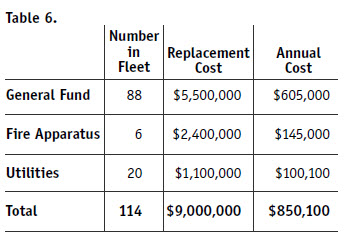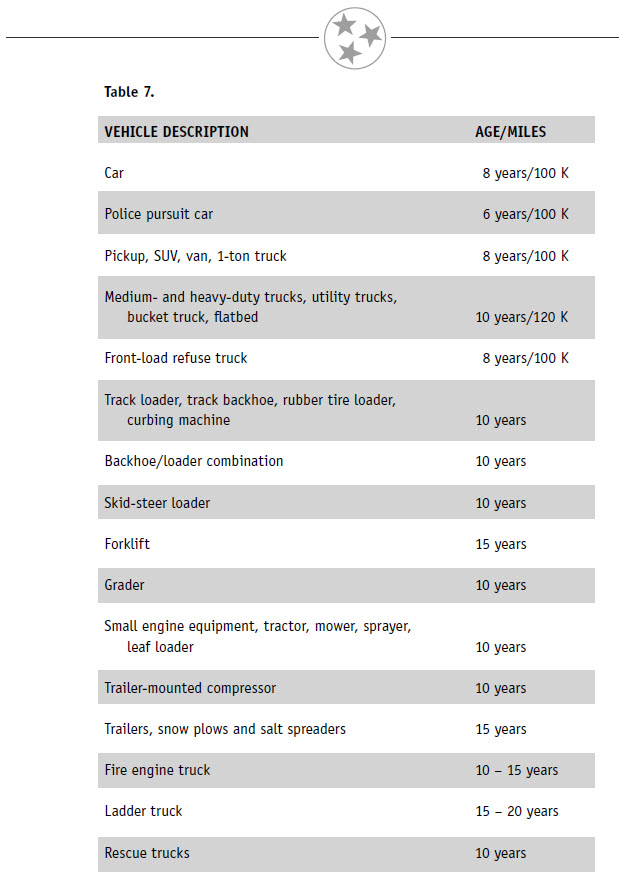Fleet Plan Implementation
- Each year prior to budget preparation, the fleet manager and finance director will hold a meeting with each user department to confirm vehicle replacements for the upcoming budget.
- When new vehicle/equipment is purchased, a replacement cost will be established based on its economic life.
- The replacement cost will be applied as an expense against the new vehicle and charged to the department where it is assigned.
- The replacement expense will be credited to the Replacement Fund.
- Proceeds from vehicle/equipment sales will be credited to the Replacement Fund to provide a cushion against inflation.
- Expenditures from the Replacement Fund will be authorized by the finance director.
- The finance director will prepare and distribute to department heads a report detailing the replacement charge and remaining balance due for each unit. The report will be prepared and distributed on a frequency to be determined by the city.
- A unit’s replacement fee is discontinued when the fund for that specific unit is fully reimbursed.
- If a vehicle is totaled due to an accident and for the amount not covered by insurance, the accumulated total of replacement fees for that vehicle can be used to help fund the replacement. Any additional funding needed to fully pay the replacement cost must be provided from sources beyond the Replacement Fund.
- At the end of the vehicle’s economic life, funding for its replacement will be provided by the Replacement Fund.
- Table 6 provides an example of the annual cost needed from the general fund and the utility fund.
- The replacement plan assumes that an average life span can be established for a group (type) of equipment based on industry standards and analysis. The following life expectancy shown in Table 7 could be used for purposes of planning. Because this listing is an average, some equipment will operate beyond the stated life expectancy and some less.


